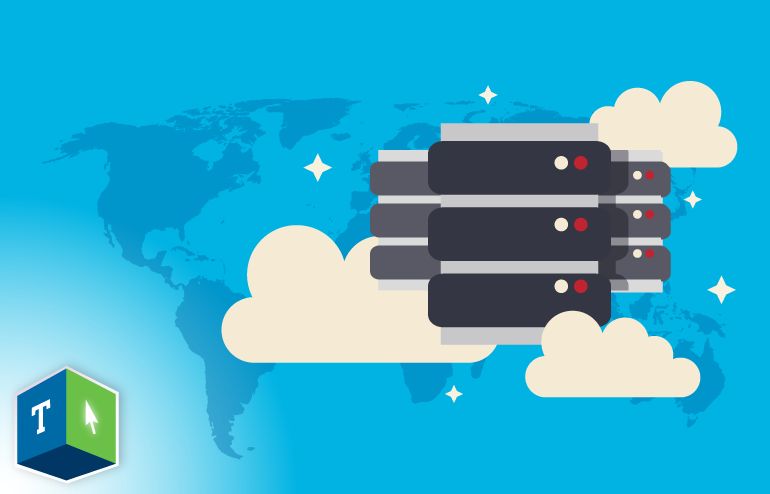4 Steps for Moving Your Community Bank’s Server Workloads to the Cloud
More and more organizations are moving line of business and ancillary systems to the cloud including community banks and credit unions. Moving applications to the cloud is a way for financial institutions to control spending, ensure compliance with regulations, and enable employees to focus on revenue generating activities. Cloud outsourcing may start with specific IT functions or processes such as disaster recovery, backup and network servers.
Today, core banking services are almost exclusively hosted from the cloud. The in-house servers, or the servers running ancillary systems, consist of lending applications, Microsoft applications, internal accounting applications, and voice response systems, among others. There is a lot of infrastructure involved in managing all the applications needed to run an efficient and successful financial institution.
While the cloud has proven to be beneficial for banks by enabling the limited in-house personnel to focus on core strategic initiatives instead of worrying about IT infrastructure, there are steps all financial institutions must follow. Here are four things to consider before moving your bank’s critical data to the cloud.
Support Your Bank’s Corporate Strategy
Each bank has a unique corporate strategy that is driven by its market situation, such as the desire to expand services offered, open new branches, merge with another institution or even to be acquired. This strategy will guide how and what should be moved to the cloud.
Catalog the Application Opportunities
Before moving to the cloud, your IT team must understand the requirements of the applications that are being used. Evaluate the IT infrastructure that must exist to provide each application and determine how to minimize the amount of IT assets that are needed internally. Then, the applications that can be moved to the cloud can be identified.
Determine the Best Cloud Service for your Bank
The idea behind moving to the cloud is to eliminate servers, internal infrastructure, and applications that must be hosted inside your bank, as well as the associated work to manage each one. This enables your IT team to work on higher value, strategically critical projects.
There are three options to do this:
- Simply move your servers to a co-location facility or data center. This can be an attractive option since it does not require extensive configuration changes to applications and servers, but moves these critical assets out of the bank building to a highly available datacenter.
- Move to an Infrastructure as a Service (IaaS) model, which means that instead of physically moving servers that you own, you pay a service provider to lease out the server capacity you need. You access the servers remotely to install, run, and maintain your applications. This can be a challenging option. It can be rather expensive, and the financial institution and IT personnel are still required to manage the process and technical specifications. IT personnel must reinstall all applications in a new environment and change all networking at the same time, which is a cumbersome and time consuming process to manage.
- Rather than setting up additional infrastructure, banks are turning to the Software as a Service (SaaS) model, which is a software licensing fee and delivery model in which software is licensed on a subscription basis and is centrally hosted by the application software provider. This often enables financial institutions to run their applications from a browser, is supported by the developer and has no additional infrastructure to maintain.
Develop a Phased Approach
Long term, banks should consider moving all of their applications to the cloud, and most of the applications are ready to do so today. The migration should be completed in multiple phases, enabling a smoother transition. However, the applications that are not technically ready should not be forced to move as this can cause unnecessary complications and technical issues. Today, financial systems and even Microsoft solutions are cloud-based.
While the benefits of cloud computing — improved efficiency, scalability, cost, reliability, improved access, consistent security and compliance and compensation??? for limited in-house resources — are clear, making the leap to these services can be challenging and a daunting task for some community banks. Working with an outsourced service provider, such as Safe Systems, can help with the process, design and installation while ensuring the systems are compliant and meet all regulator expectations. Our cloud services are built specifically for community banks. With focus on regulatory guidance and compliance, we do extensive and rigorous vendor management vetting of all cloud providers before we offer or recommend a provider or service. We have more than 20 years’ experience offering products and services exclusively to community banks and credit unions. Safe Systems helps financial institutions to significantly decrease costs, increase performance, and improve their FFIEC compliance posture. Working with Safe Systems lets bankers go back to being bankers!
Dispelling 5 IT Outsourcing Myths within Financial Institutions
Learn why five of the most commonly believed “facts” about IT outsourcing within community financial institutions are actually myths.



